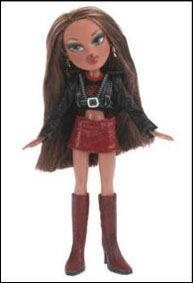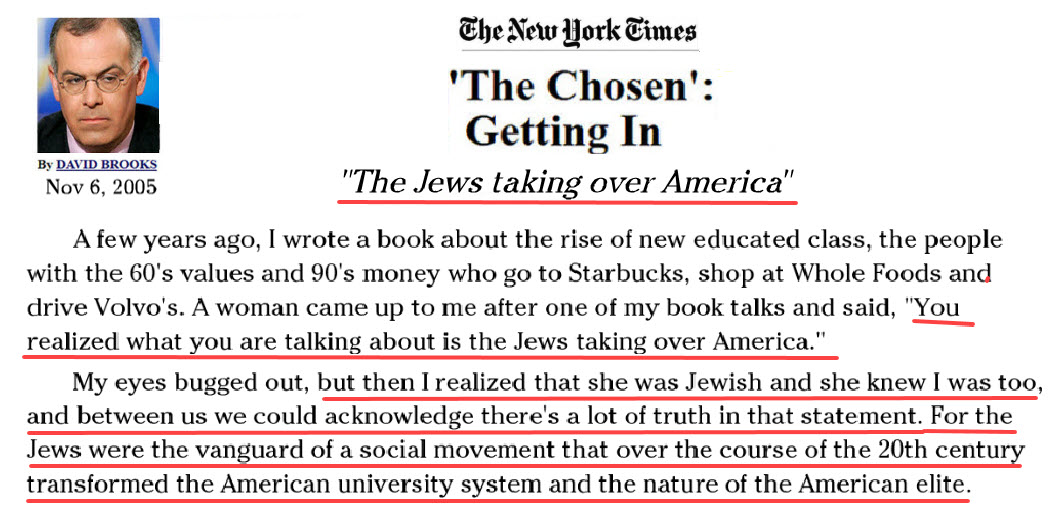By Dr. Kevin MacDonald
Not having any young daughters I was quite unaware of the “wildly successful” Bratz dolls or the recent movie featuring them. (“A Good-Girl Make-Over for the Bratz,” Los Angeles Times, July 30, 2007). The dolls are aimed at 4-8-year-old girls, with “dewy lips, fishnet stockings and barely-there miniskirts — a creep-out factor for a lot of moms. Earlier this year, a report from the American Psychological Assn. even mentioned the Bratz dolls by name and said ‘it is worrisome when dolls designed specifically for 4- to 8-year-olds are associated with an objectified adult sexuality.’ ” So we have the cultural subversion theme going on: “ten-inch tall hoochie mamas” for little girls to play with. Director Sean McNamara’s first reaction to the dolls is revealing: “These aren’t cute dolls — they look like sluts.” (Here’s a collection from Google Images.)
But for the movie, they probably figured that the teenage girls as sluts theme would mean that the girls would actually have to act slutty rather than just look slutty. That would bring about an R-rating or worse, and therefore cut down on the profits. So the hoochie mama theme was downplayed in favor of a strong multicultural conflict between multi-race good guys versus “country club white” bad guys. The bad guys are led by “student-body president Meredith, who is platinum blond, affluent, haughty and in possession of both nefarious plans to rule the school and a pampered pooch named (ahem) Paris.”
On the other hand, the Bratz “are the urban poly-hues of a Benetton ad”: one “lily-white,” one African-American, one Asian, and one Latino (played by the daughter of an Australian Jew and a Spanish Catholic). So there is a Jewish theme as well: “The loopy vision of a Jewish grandmother who, with no explanation, has a mariachi band strumming away and munching on bagels in her kitchen.”
All of the non-white characters look about as white as possible while nevertheless retaining distinctive racial characteristics. This doubtless makes the characters more attractive to white girls who constitute the core audience for the movie. After all, it’s natural to be attracted to those like yourself (part of the deep structure of Philippe Rushton’s Genetic Similarity Theory)— even when the ingroup crosses racial lines. Having a dark-skinned Muslim character dressed in a Burkha would definitely ruin the aura.
The driving force behind Bratz is Avi Arad, an Israeli-American who is very big on diversity, at least for America: “The first thing I saw in them was diversity.” … “I really liked the idea that they had a Latino girl, an Asian girl, an African American girl and a lily-white kid. They show that your color is not going to set up your path in life. And I think that works because, among kids, it’s becoming more and more of ‘one world for a change.'”
The dolls and the movie are just the beginning. A Broadway musical and sequels to the movie will in due time be coming to theaters near you. Perhaps in the sequels they can continue with the “diversity is good — white without diversity is bad” theme, but maybe spice it up with some slutty behavior more in line with what the Bratz dolls are all about.
Hey Avi, how about a movie aimed at Israeli kids? I’ve got the perfect plot. A Jewish girl from Israel, an Israeli Arab, a Palestinian Muslim from the West Bank, and an Arab Christian do battle against a stereotypically evil Jewish-Israeli girl. A religiously fundamentalist West Bank settler who wants all Arabs removed from Israel and the occupied territories would be perfect. Or we could play it safe and have the bad guy be a Jewish girl who simply wants Israel to remain a Jewish state. Since you’re into physical stereotypes, the evil Jewish girl could have all the stereotypical Jewish physical features—something right out of Der Sturmer, and we could even do an Israeli version of the “Jewish American Princess” bit. I’m telling you, Avi, this idea has legs. Have your people call me. We’ll do lunch.
Article Source: Dr. Kevin MacDonald




